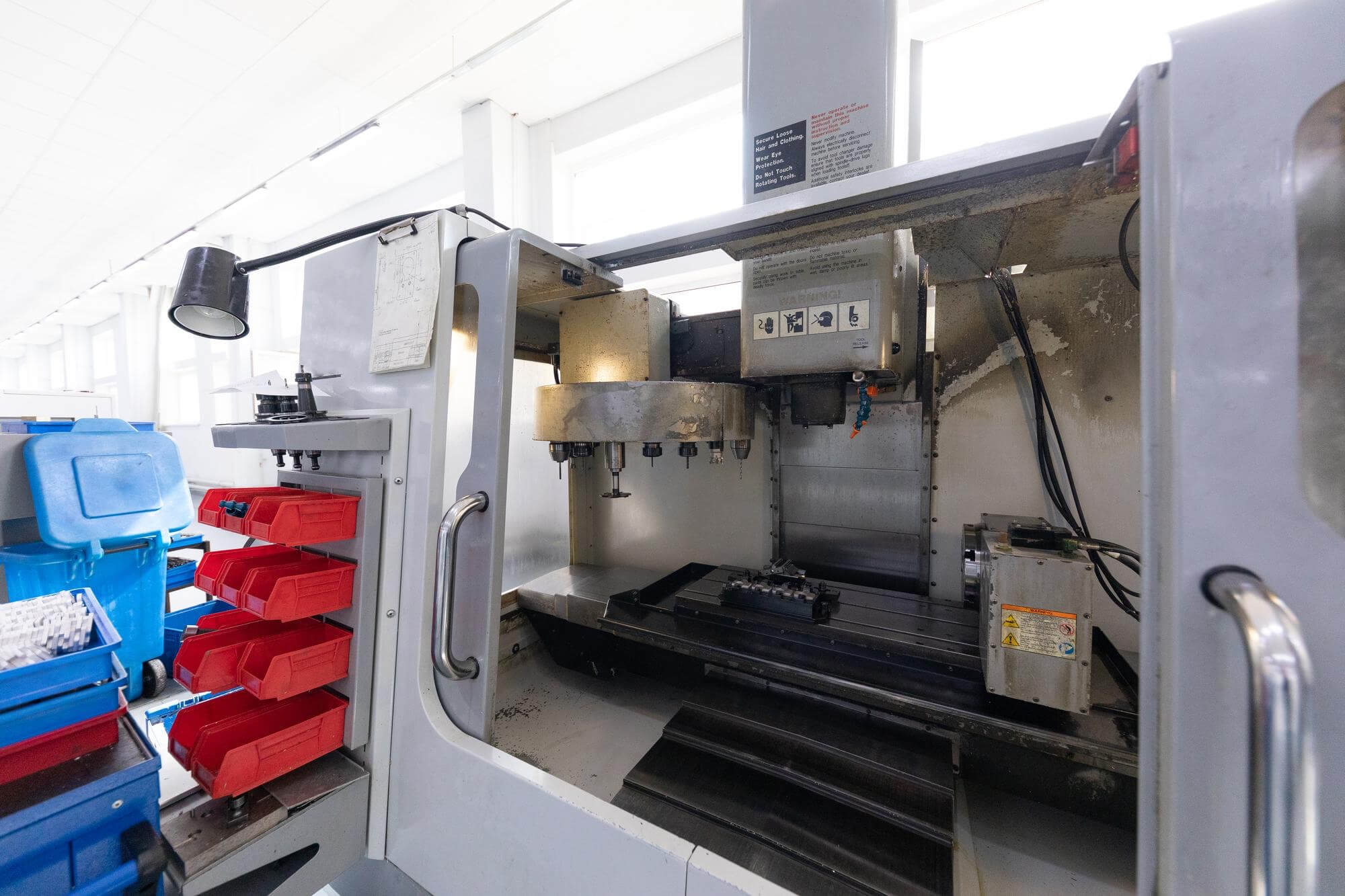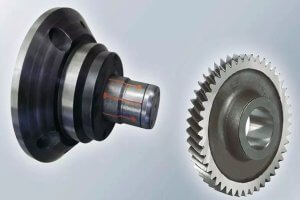High-speed cutting (HSM or HSC) is not just a technological advancement; it’s a fascinating journey of innovation that has transformed CNC machining parts over the decades. Let’s take a trip down memory lane and explore the evolution of high-speed cutting, from its humble beginnings to its modern-day applications.
The Early Days of High-Speed Cutting
The concept of high-speed cutting dates back to the 1920s, thanks to the pioneering work of Dr. Carl J. Salomon in Germany. Between 1924 and 1931, Salomon conducted numerous milling experiments using circular saw blades on different materials like aluminum, steel, and copper. He discovered an intriguing phenomenon: as cutting speed increased, the temperature rose to a peak and then surprisingly dropped when the speed was further increased. This peak speed, where the temperature was highest, was termed the critical cutting speed.
Salomon’s findings indicated that beyond this critical speed, the cutting temperature dropped to levels that the tools could withstand, making it possible to cut at much higher speeds without damaging the tools. This breakthrough led to the birth of high-speed cutting. Salomon even applied for a patent for his discovery in April 1931.
The Mid-20th Century Exploration
Despite the groundbreaking nature of Salomon’s work, significant advancements in high-speed cutting didn’t occur until the late 1950s. Researchers around the world, particularly in the USA, Japan, France, the Soviet Union, and the UK, began to explore the feasibility of high-speed cutting.
In the USA, the Lockheed research team led by R.L. Vaughn conducted extensive experiments from 1958 to 1960. They studied the cutting forces, temperatures, tool wear, vibrations, and chip formation mechanisms using materials like AISI 4340 steel, Ti-6Al-4V titanium alloy, nickel-based superalloys, and aluminum alloys. Their tools included high-speed steel, carbide, and Stellite. Cutting speeds ranged from 4570 to 73,000 m/min, and depths from 0.127 to 1.10 mm. Their research confirmed that high-speed cutting could significantly reduce machining time and improve surface quality.
During the same period, Soviet researcher V.I. Kuznetsov conducted experiments on the cutting forces, chip deformation, chip hardness, and work hardening layer depth when machining aluminum and duralumin at high speeds. His findings demonstrated the feasibility of high-speed cutting for these materials with cutting speeds up to 42,000 m/min.
Japanese researcher Yoshinobu Tanaka and his team also conducted systematic studies on high-speed cutting, focusing on chip formation mechanisms, cutting forces, surface quality, cutting temperatures, and tool wear. Their experiments included materials like aluminum, brass, and soft steel, using high-speed steel, ceramic, and carbide tools. They discovered significant differences in chip shapes and cutting dynamics compared to conventional cutting.
1970s: High-Speed Cutting Gains Traction
By the 1970s, high-speed cutting had gained traction, with numerous studies focusing on the practical applications and theoretical underpinnings of this technology. The Defense Advanced Research Projects Agency (DARPA) in the USA initiated a comprehensive research program in 1979 to study high-speed cutting, exploring everything from fundamental theories to economic feasibility.
Researchers found that higher cutting speeds reduced cutting forces and improved surface quality, although tool wear remained a challenge. High-speed cutting of aluminum alloys proved particularly successful, while cutting steels and superalloys demanded better tool materials to cope with the extreme conditions.
In Germany, the Darmstadt University of Technology’s Institute for Production Engineering and Machine Tools (PTW) led a collaborative research project funded by the Ministry of Research and Technology. This project, spanning from 1979 to 1983, focused on the characteristics of high-speed milling processes. They developed a high-speed spindle system supported by magnetic bearings, which significantly improved the performance and reliability of high-speed machining.
1980s: Expansion and Technological Breakthroughs
The 1980s saw continued advancements in high-speed cutting technology. The USA, Germany, and Japan were at the forefront of these developments, investing heavily in research and development. New tool materials, such as polycrystalline diamond (PCD) and cubic boron nitride (CBN), were introduced, enhancing the capabilities of high-speed cutting.
The Cincinnati Metal Cutting Group in the USA presented a comprehensive report on high-speed cutting at the CIRP annual meeting in 1978. This report, titled “The Potential and Requirements of High-Speed Cutting,” compiled data from various research institutions and industrial applications, highlighting the economic feasibility and technical challenges of implementing high-speed cutting in production environments.
In 1981, the French Machine Tool Research Center and Forest-Line conducted high-speed cutting experiments on steel and cast iron. Their findings demonstrated the feasibility of high-speed cutting for cast iron, but highlighted the challenges of machining steel at high speeds due to the limitations of available tool materials.
1990s: Commercialization and Industry Adoption
Entering the 1990s, high-speed cutting technology saw widespread adoption in manufacturing industries. Germany, Japan, the USA, and other industrialized nations invested heavily in developing high-speed cutting machines and tools. Innovations included linear motors for rapid feed rates and advanced cooling systems to maintain tool precision and longevity.
For example, the introduction of linear motors in 1993 marked a significant milestone, allowing machines to achieve feed rates up to 120 m/min and spindle speeds of up to 150,000 r/min. These advancements enabled the efficient machining of complex parts with high precision, significantly boosting productivity and reducing costs.
The aerospace, automotive, and mold-making industries were among the first to embrace high-speed cutting. In aerospace, the ability to machine lightweight, high-strength materials like aluminum and titanium at high speeds revolutionized the production of aircraft components. In the automotive industry, high-speed cutting of engine blocks, transmission components, and other critical parts improved efficiency and quality.
2000s to Present: Advanced Applications and Continuous Innovation
In the 2000s, high-speed cutting continued to evolve, driven by ongoing advancements in machine tool technology, tool materials, and process optimization. The integration of computer numerical control (CNC) systems and sophisticated software allowed for precise control of cutting parameters, further enhancing the capabilities of high-speed machining.
Today, high-speed cutting is a cornerstone of modern manufacturing, especially in industries like aerospace, automotive, and mold making. Its ability to produce high-quality parts quickly and efficiently makes it indispensable. Companies worldwide continue to push the boundaries, developing new tool materials and machining strategies to further enhance performance.
The table below provides a snapshot of typical cutting speeds and applications for various materials:
| Material | Cutting Speed (m/min) | Application |
|---|---|---|
| Aluminum Alloys | 1000 – 7500 | Aerospace components, automotive parts |
| Cast Iron | 500 – 2000 | Engine blocks, brake discs |
| Steel | 300 – 800 | Structural components, gears |
| Hardened Steel | 100 – 500 | Tooling, molds |
| Titanium Alloys | 200 – 400 | Aerospace components, medical devices |
High-speed cutting has come a long way from Salomon’s early experiments. It’s a tale of relentless innovation, proving that pushing the limits of what’s possible can lead to remarkable advancements in manufacturing technology.
Other Articles You Might Enjoy
- High-Speed Machining Techniques in CNC Machining Parts: Secrets to Enhanced Efficiency and Quality
High-speed machining (HSM) is an intriguing and evolving field within CNC machining. The term "high-speed" is relative and varies depending on the machining method, workpiece material, and tool material. Defining…
- CNC Machining Parts: The Art of Spindle Speed and Direction Control
CNC machining is a fascinating world where precision meets creativity. At the heart of this intricate dance is the spindle, a critical component that dictates the success of machining parts.…
- Optimizing for Speed: Lightweight Materials in High-Speed CNC Machining
Introduction to CNC Machining and the Importance of Speed Optimization In the manufacturing industry, Computer Numerical Control (CNC) machining plays a crucial role. It is a process employing computerized devices…
- Beyond Cutting: Exploring the Multifaceted CNC Machining Process
1. Introduction: Unveiling the Layers of CNC Machining In this introductory section, we peel back the layers of the CNC machining process, going beyond the traditional understanding of cutting. It…
- Material Considerations for High-Speed CNC Machining: Aluminum Alloys vs. Titanium
Introduction: High-Speed CNC Machining and Material Considerations In the world of modern manufacturing, High-Speed CNC (Computer Numerical Control) machining plays a pivotal role in producing precision parts at fast turnaround…
- CNC Machining Plastics: Delrin vs. Nylon for High-Precision Parts
Introduction to CNC Machining Plastics The Computer Numerical Control (CNC) machining process plays a vital role in manufacturing various high-precision parts and components. This advanced technology uses pre-programmed computer software…






